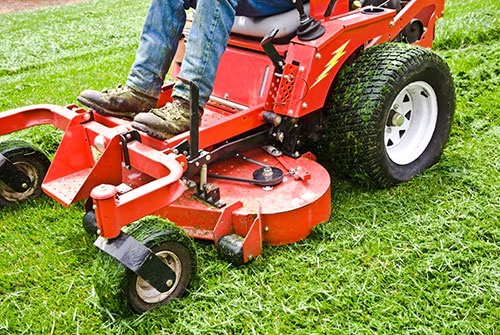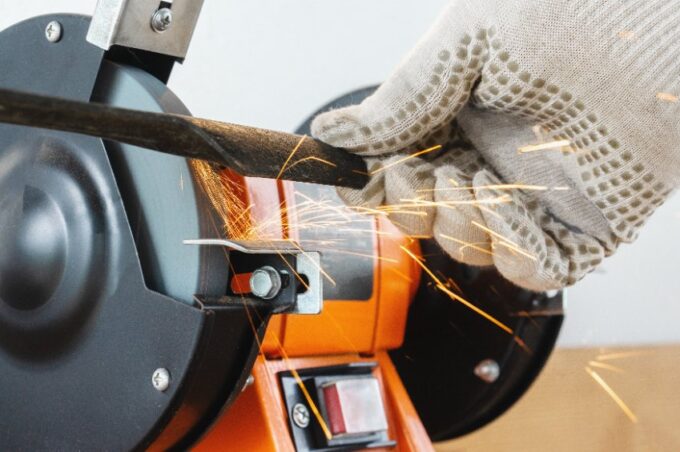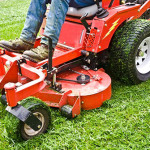5 Important Tips for Routine Lawn Equipment Maintenance
One of the best things that you can do for your lawn equipment is keep up with routine maintenance tasks. Your lawnmower, string-line trimmer, hedge trimmer, chainsaw, and all other powered lawn tools last longer and work more reliably if you take the time to clean and care for the equipment.
Preventative maintenance doesn't require a huge amount of time and pays off in longer-lasting lawn equipment. Investing your time in weekly, monthly, and yearly maintenance combats wear-and-tear on equipment and keeps it running longer. Here are the top 5 tips to keep in mind when you’re working to keep your lawn equipment running smoothly.

1) Clean Equipment Frequently
All lawn equipment gets dirty. Chainsaws get covered in sawdust. Cut grass builds up on lawnmower decks. Weeds wrap around trimmer heads. Leaving dirt or decaying organic matter on equipment can reduce efficiency and encourage rust on metal parts. If the dirt and debris are covering air intakes, it can also trigger the engine overheating.
When cleaning any type of equipment, you can start by brushing off loose dirt with a stiff brush. Then, use a wire brush or putty knife to remove caked-on grass and other debris. When cleaning trimmers, you can dip the brush in soapy water. Be careful to keep water away from the engine or motor for all types of equipment.
For mowers, you can use a water hose to spray off the deck. Some mowers have a wash-out port to make this easier. When working with small walk-behind mowers, you can drain the gas and then tip the mower on its side to get at the mower deck. For larger mowers, such as zero-turn riding mowers and lawn tractors, you'll have to either remove the mowing deck or raise the mower to reach under the deck. Keep safety at the forefront of your mind when cleaning mower decks. Make sure the mower is secure before working on the deck.
2) Sharpen or Replace Cutting Parts

Sharpening lawnmower blades and chainsaw teeth reduce strain on equipment and improve performance. You should sharpen or replace lawnmower blades at least once a year. Sharpen chainsaw chains when they start to get dull to prevent stress on the powerhead, sprocket, and guide bar. For string-line trimmers, simply replace the trimmer line. You can also buy replacement blades for edgers, and sharpen blades for hedge trimmers and brush cutters.
You can tell lawnmower blades need to be sharpened when the blades are tearing grass instead of cutting it. Signs that a chainsaw chain needs sharpening include not cutting straight, the chain stops self-feeding, and the saw is expelling dust instead of wood chips. Check out these posts from our archives for more sharpening tips:
3) Keep Up with Engine Care
If you’re working with gasoline-powered equipment there is some extra maintenance that you’ll need to do to keep the engines running well. Once a year, remove the spark plug and inspect it for damage. If the plug is just dirty, you can clean it by scrubbing it carefully with a stiff brush before replacing it. If it's damaged, replace it with the manufacturer's recommended spark plug (check your owner's manual for details). Since spark plugs are inexpensive, people often replace them every year just to be on the safe side.
You should also clean or replace the air filter regularly to keep clean air coming into the engine. Follow the manufacturer’s instructions in your owner's manual for cleaning air filters or replace them with the recommended type of filter. Most paper filters should be replaced, but you can clean foam filters with soap and water if they're not damaged.
For 4-cycle engines, remember to change the oil regularly. Make sure the engine is warmed to operating temperatures, then turn it off and disconnect the spark plug. Drain the used oil and replace it with the type of oil recommended in your owner's manual.
4) Battery-Powered Care
One of the great things about battery-powered tools is that you don’t need to worry about any engine maintenance. However, there are still some routine maintenance things that you should do to keep battery equipment running smoothly.
In addition to keeping the tools clean and sharpening or replacing cutting parts as needed, you’ll also need to take care of the battery. To help extend the battery life, recharge the battery before it runs all the way down to 0% charge. Keep extra batteries on hand so you can charge one while you’re working with another. Remember to remove batteries from the charger after they’re fully charged since overcharging can damage batteries. When storing equipment, remove the battery and store it in a location that is not too hot or too cold.
For more information, read “How To Care for Battery-Powered Tools.”
5) Stay Safe
Always keep safety in mind when working with lawn equipment. Remember to disconnect the spark plug and battery cables before servicing any power equipment to prevent accidental starts. Also, exercise caution when working with sharp parts like cutting blades.
If you’re ever unsure about how to perform a maintenance task or you’re not sure you can do so safely, it’s time to call in a professional. A professional service department can also support your at-home maintenance. Richardson Saw & Lawnmower carries the parts you'll need to maintain the equipment we sell, and if you run into a problem you'd rather not tackle yourself you can bring your equipment into our service department.


